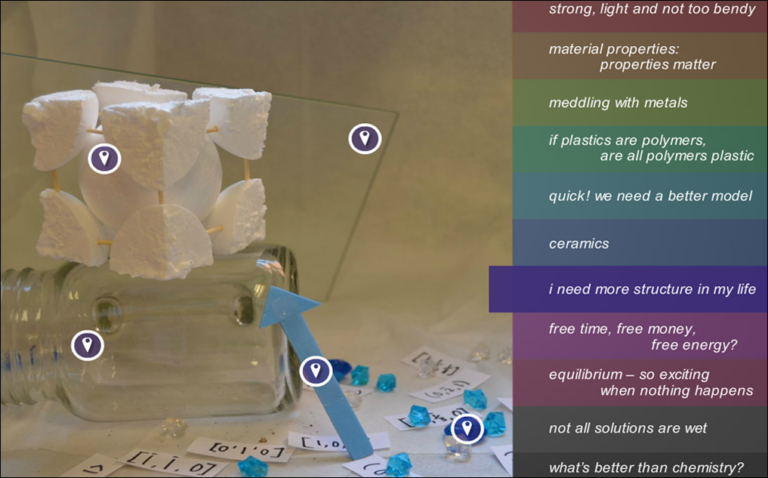If plastics are polymers, are all polymers plastic?
Learning Outcomes
- Represent the structure of a polymer using the model of a collection of strings
- Apply the string model of polymer structure to explain strengthening of polymers
- Critize the shortcomings of the string model of polymer structure as applied to the optical properties of polymers
- Explain the mer unit as the logical building block for understanding polymer structure
- Use molecular weight as a means of describing the average length of polymer molecules
- Differentiate between and infer the property implications of the following microstructural features of polymers: crystallinity, chain length, extent of cross-linking
- Recognize the mechanistic similarities between melting, plastic deformation, and chemical dissolution of polymers
- Show how differences in electronegativity between atoms in a molecule can create electric dipoles, which in turn can allow secondary bonding
Related Project Resources
| Type | Title | Author | Description |
|---|---|---|---|
| File | If plastics are polymers, are all polymers plastic? (Storyline File) (ZIP, 26 MB) | Prof. Scott Ramsay | |
| Video | The concept of a scientific model | Prof. Scott Ramsay | This video is about The concept of a scientific model. (Duration: 08:30) |
| Video | Mechanical Behaviour of Polymers | Prof. Scott Ramsay | (Duration: 11:41) |
| Video | Structure of Polymers | Prof. Scott Ramsay | (Duration: 08:01) |
| Video | Strengthening polymers: by changing interactions between molecules | Prof. Scott Ramsay | (Duration: 12:41) |
| Video | Strengthening polymers: by changing interactions between molecules | Prof. Scott Ramsay | (Duration: 12:28) |
| Video | Electric diploes and the secondary bond | Prof. Scott Ramsay | (Duration: 13:17) |
| Video | Optical transparency of Plexiglas(R) | Prof. Scott Ramsay | (Duration: 12:14) |

